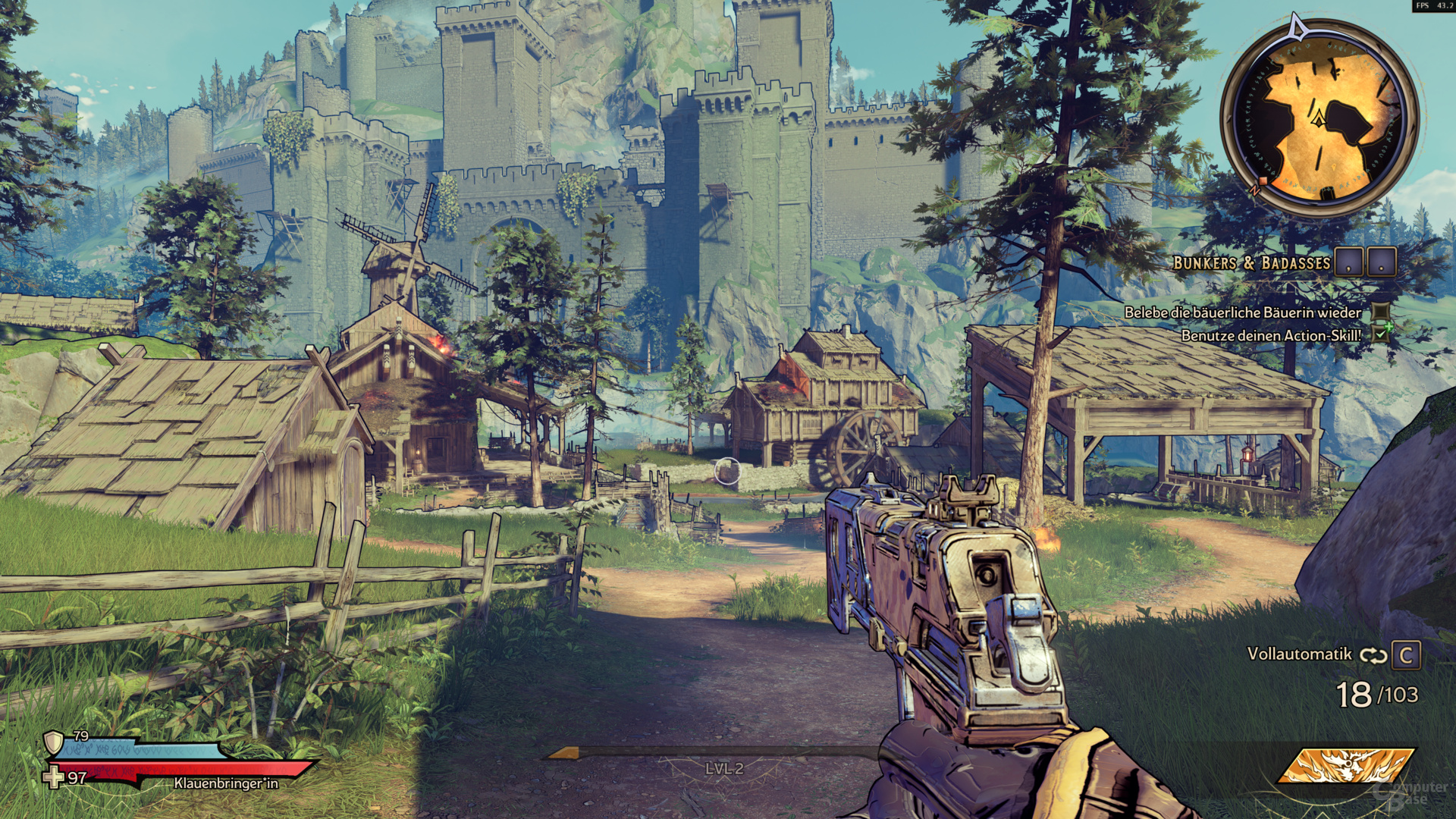With Tiny Tina’s Wonderlands, the eponymous character from the Borderlands universe gets her own spin-off. The game is a classic Borderlands with an interesting narrative setting. The technology is based on Borderlands 3, but offers different results than the original in the test.
Borderlands 3 (Trial) is not followed by Borderlands 4, but by Tiny Tina’s Wonderlands, a spin-off that focuses on the character of the same name from the Borderlands universe. And since Tiny Tina plays a D&D RPG in Wonderlands, there are some narrative and gameplay twists that are a bit different than the Borderlands universe.
Tiny Tina offers decent graphics
Technically, Tiny Tina’s Wonderlands takes Borderlands 3 as its skeleton, keeping the comic book style of the series while slightly improving the quality of the graphics. There are a few more details to see everywhere in the new title, but no major changes. But that’s not particularly bad, because the graphics just fit the game.
Of course, the game could have gone a step further optically, but it is definitely not a graphic success. Overall, it’s still a pretty good title, and the style of the comics helps in that regard. However, the developers at Gearbox should clearly improve the quality of the graphics for the fourth part of Borderlands.
Apart from DirectX 12 and CAS, there are hardly any features
Tiny Tina’s Wonderlands again uses Unreal Engine 4 as the graphics engine, and the main API is DirectX 12. Alternatively, you can switch to DirectX 11 in the graphics menu. AMD’s FidelityFX CAS is used on the PC and with it a sharpening filter that can be turned on and off, but not fine-tuned. There is no ray tracing, the same applies to enhancement technologies like AMD FSR or Nvidia DLSS.
Tiny Tina’s Wonderlands displays a good graphical menu on PC, although there is still room for improvement. In addition to the classic graphical presets and individual options, there is an FPS limiter that can be set to 30, 60 or 120 FPS. Alternatively, the frame rates that deviate from all three values can be set in 1 FPS increments in the range between 15 and 300 FPS.
There is also downsampling and upsampling in the game, even if the rendering resolution can only work with the fixed values of 50, 75, 125, 150, 175 and 200 percent. A finer gradation would be helpful, especially when scaling up, as the pixel loss is already quite high, even 75 percent.
Also, a sharpening filter can be turned on or off with AMD FidelityFX CAS, i.e. it cannot be fine-tuned. Last but not least, there is a built-in cue point that plays a flyby sequence. The sample screenshots of the individual options, on the other hand, are not on board and the sample descriptions are simple.
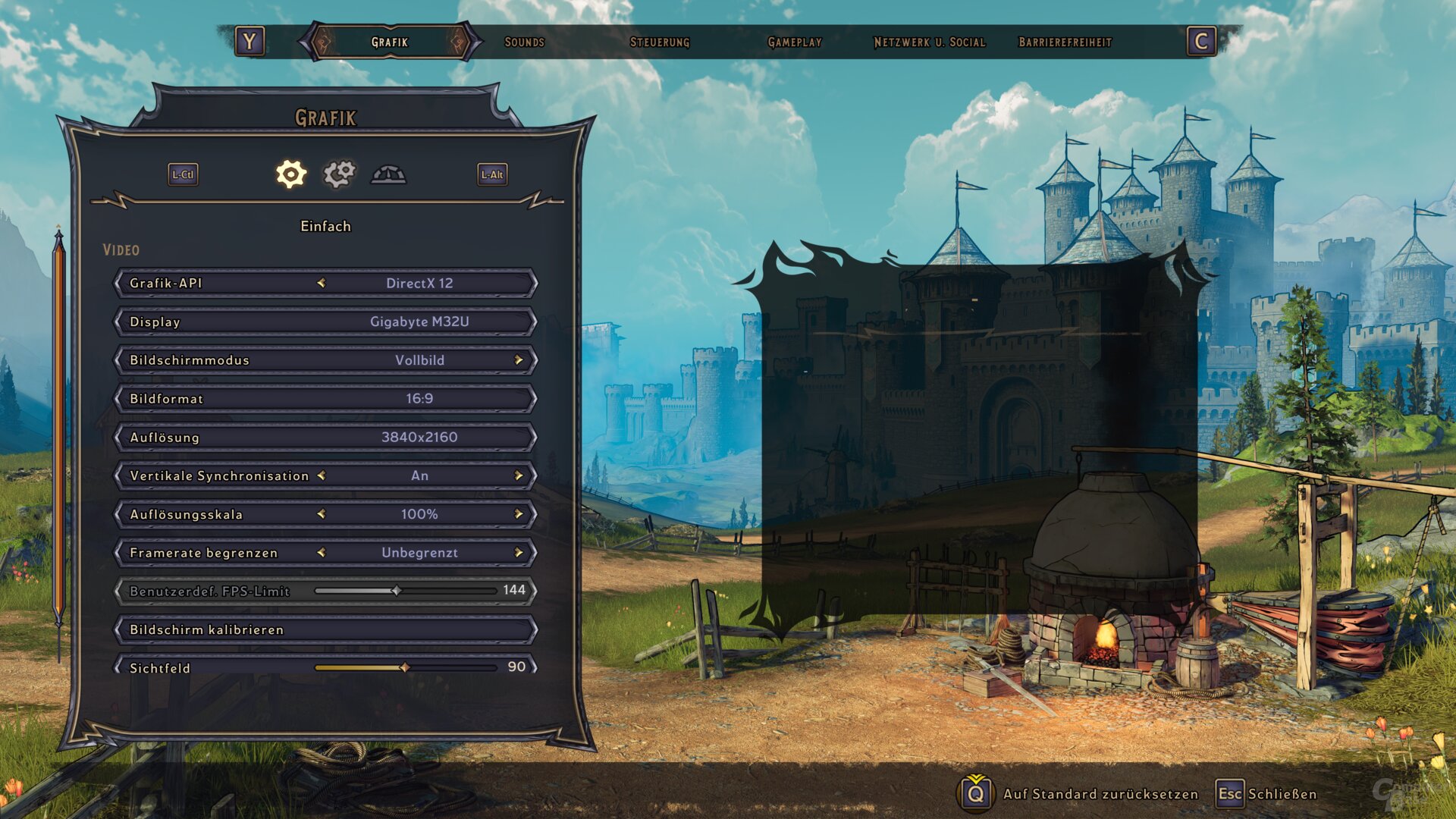
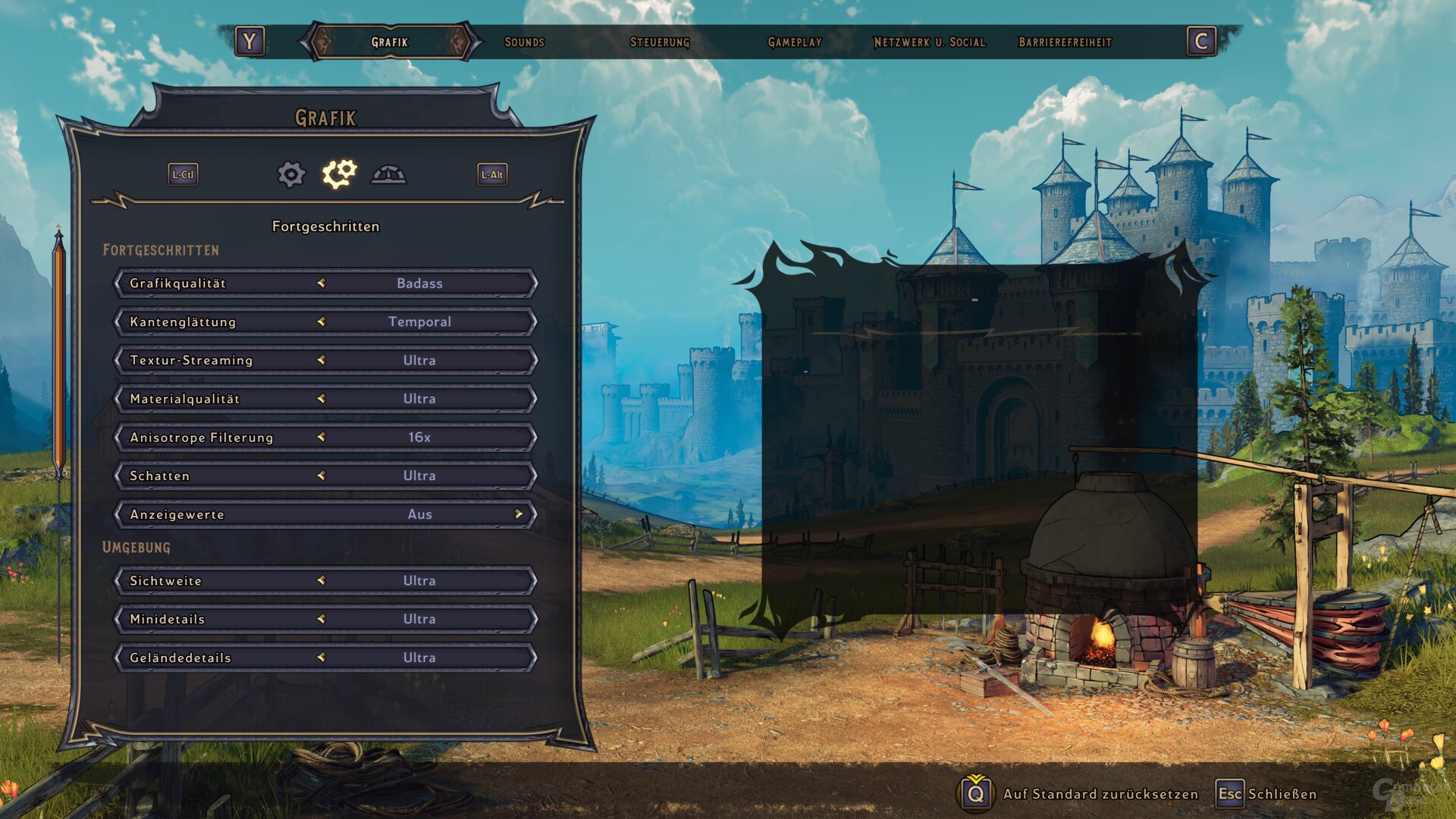
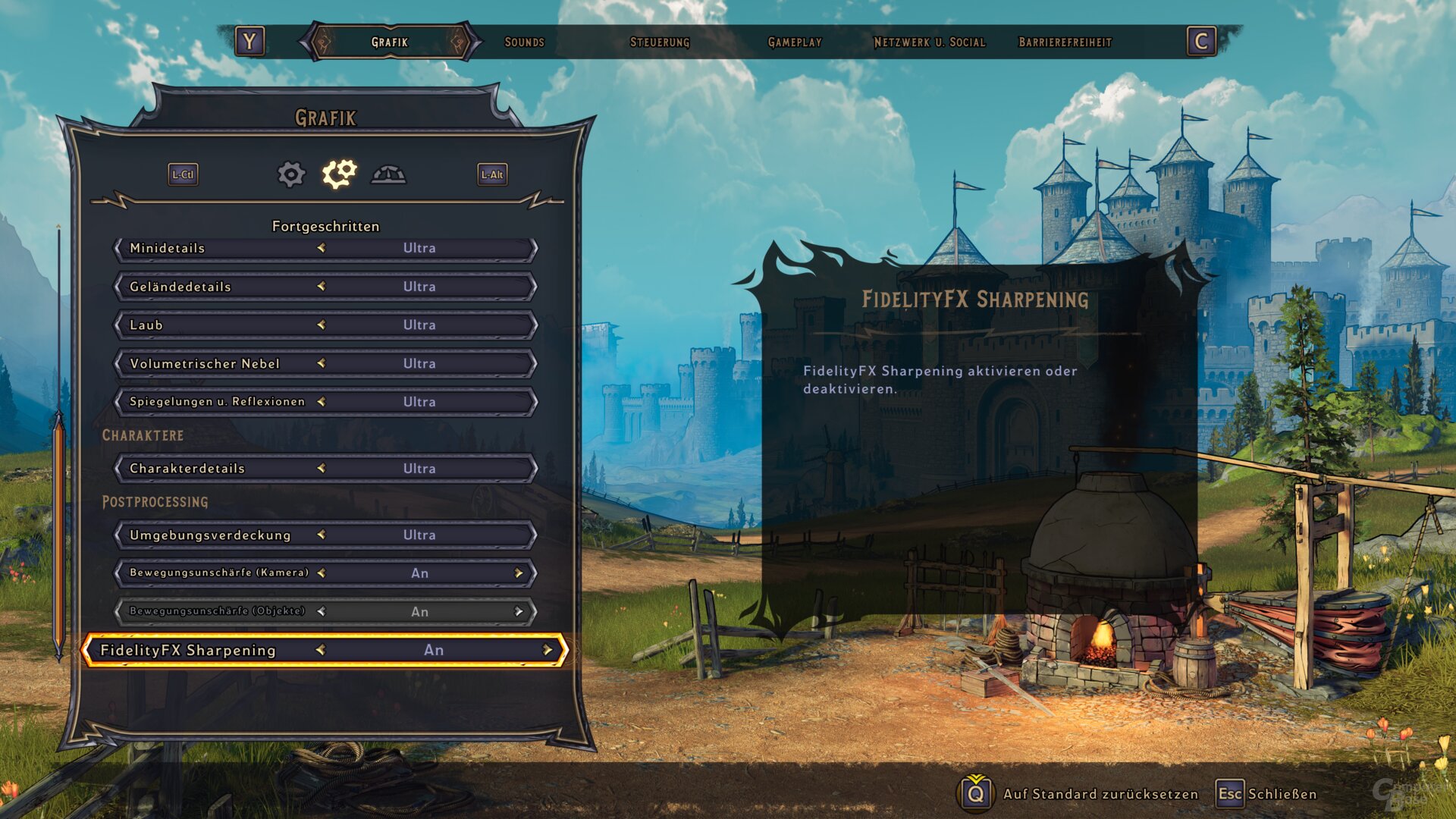
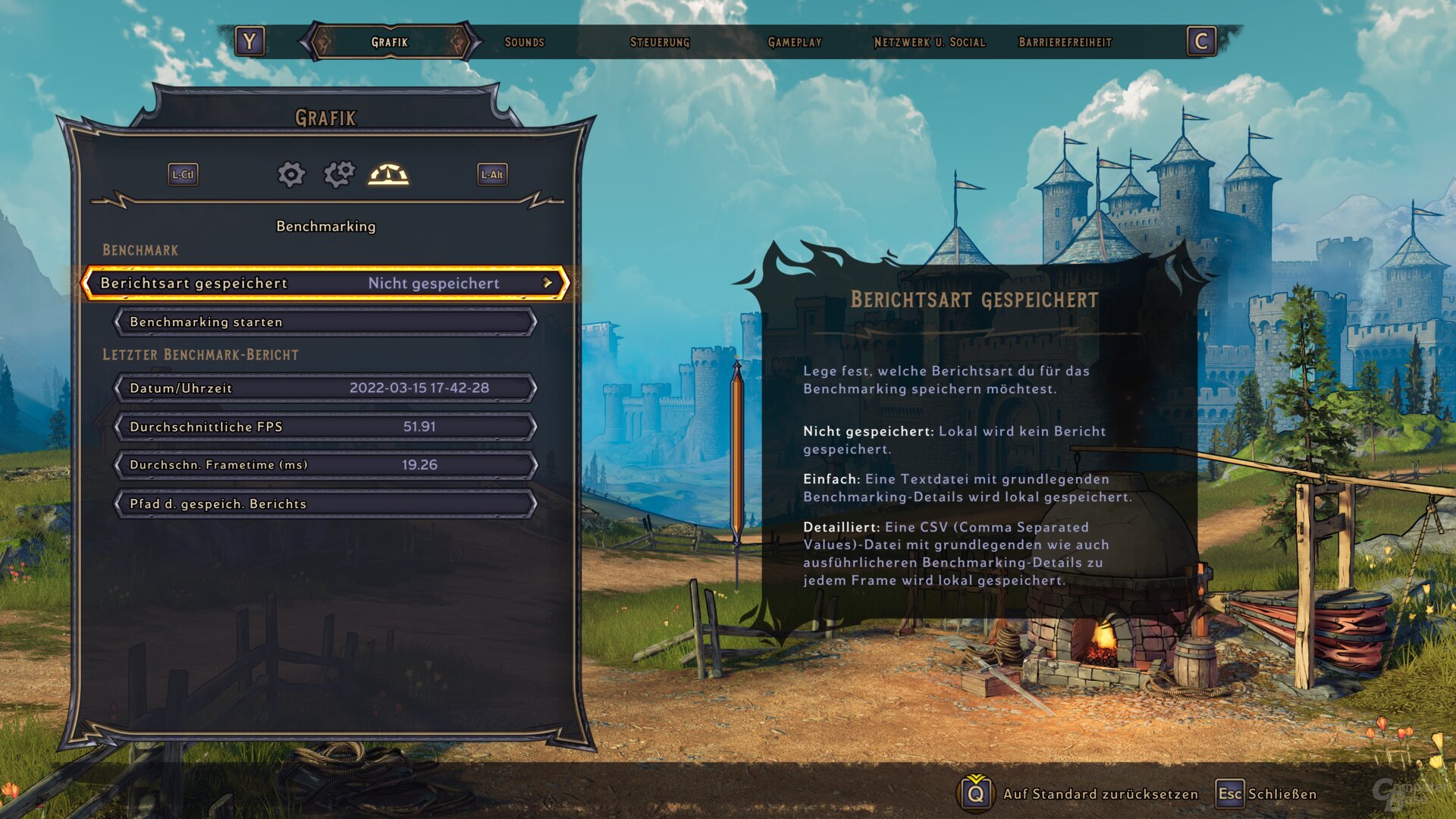
Six gaming presets with the biggest impact.
Tiny Tina’s Wonderlands offers six different graphical presets: “Very Low”, “Low”, “Medium”, “High”, “Ultra”, and “Badass”, where “Badass” also represents maximum graphical detail. finds only slight differences even with the loupe. With “Badass” the shadows look a bit better at medium and long distances, as they lose a bit of detail with “Ultra”. However, there don’t seem to be any other differences.
This then changes with “High”, because larger markdowns are noticeable here compared to “Ultra”. The vegetation display is literally shortened to “high” even at medium distances, which is immediately noticeable. Also, shadows and ambient occlusion are reduced, which is barely noticeable on some objects but looks significantly worse on others.
From the medium preset there are big savings, both vegetation and shadows are significantly reduced. It also leads to poorer anti-aliasing and a blurrier image. Starting from the low preset, the vegetation is largely missing, the same applies to the shadows, and in addition, the details of the object are lost. Up to and including the “High” graphics preset, the graphics in Tiny Tina’s Wonderlands can be reduced with moderate optical influences. However, starting at the “Medium” level, too much detail is lost.
Big differences between AMD and Nvidia
AMD and Nvidia graphics cards sometimes react completely differently to the graphics presets in Tiny Tina’s Wonderlands. If you lower the rough preset to “Ultra” with a GeForce RTX 3080, you get 5 percent more FPS. On a Radeon RX 6800 XT, on the other hand, it’s 10 percent. The high preset, which is still graphically decent, brings in another 16 percent on GeForce and 20 percent on Radeon.
With the medium preset, the performance increases significantly and this also applies to the difference between the Ampere graphics card and the RDNA 2. With medium settings, the GeForce RTX 3080 increases by 56 percent compared to “High”, while the Radeon RX 6800 XT increases by 80 percent. The Low and Very Low settings again scale better on the AMD GPU, but the differences are much smaller.

Introvert. Beer guru. Communicator. Travel fanatic. Web advocate. Certified alcohol geek. Tv buff. Subtly charming internet aficionado.
